Main Trends for the PV industry in 2021 – complete list
2020 was an extremely challenging year for the entire world. The Covid-19 pandemic followed by the response of nations around the world to impose lockdowns has changed many things. Therefore, we must take a step back and have a look at the driving forces that will not only affect 2021, but the rest of the impending decade ahead of us.
A decisive decade
The first and possibly greatest driving force which will steer the decisions and actions of policy makers, governments and most importantly the general populace, is the attention given to the forthcoming effects of global warming and climate change. What was once just a theory is now an extremely tangible issue and dire challenge to face for millions of people around the globe. 2020 began with some of the severe natural disasters in recent memory. The whole world witnessed the unprecedented forest fires in Australia and California, a situation that authorities could barely contain. We also witnessed concrete evidence related to rising sea waters along coastal areas in South-East Asia. Fires, storms of heightened intensity, and severe droughts are becoming commonplace in many parts of the world. The global annual temperature has kept increasing yearly since 1960 and there is no sign of it abating. This is a dire warning for all of us to find rapid and decisive solutions before it is too late.
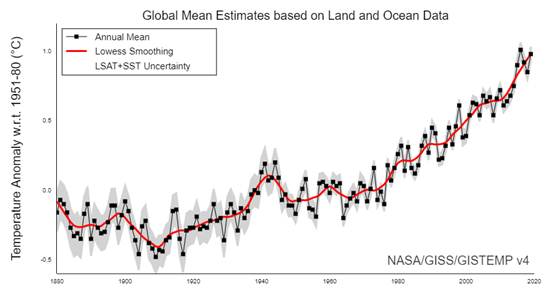
Figure 1 Global Annual Mean Surface Air Temperature Change (NASA)
In 2015 the Paris Agreement concerning climate change was signed and stipulated by nations within the UNFCC by the 2030 Climate Target Plan which paved the way for significant action in dealing with reducing global emissions in the next decade. Key factors of this plan are:
- Reducing greenhouse gas emissions to at least 55% below 1990 levels by 2030
- Creating a growing and vibrant economy through green jobs
- Worldwide cooperation to limit the rise of the global temperature to 1.5°C
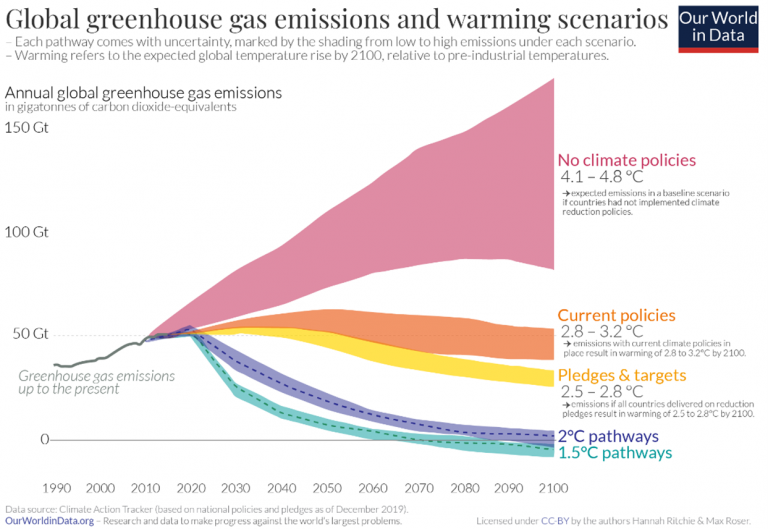
Figure 2 Global greenhouse gas emissions and warming scenarios (Ourworldindata)
The Target Plan shows great ambition of the signatory EU countries which in turn would inspire other non-EU nations to create a reasonable and responsible plan to fulfill the objectives of the Paris Agreement. The trend of shifting to renewable sources for energy supply, developing and creating local jobs for sustainable economy, international cooperation is now irreversible.
Continuous Price drop of PV modules
Solar technology is becoming more advanced in a crucial moment of human history and can be a key contributor in the global effort to battle climate change. Price of PV modules keeps dropping each year, even during this turbulent year of 2020. Between 2006 – 2019, the average price of PV modules per Wp has dropped 40% per year.
Figure 3 Learning curve for module price as a function of cumulative shipment (ITPV)
The price of PV modules in the EU shown in Figure 4 constitutes the change in price of mainstream and premium PV modules during 2020. In the first three months of the year the price increased due to the COVID-19 outbreak and first lockdowns in China. After that, module prices started to decrease until July before increasing again at the end of November 2020. The price of mainstream modules was about 80% compared to December 2019 while the price of premium modules was 90% compared to December 2019.
Figure 4 Change of PV module in EU during 2020 (Solarity)
Resilient investment in crisis
Even during the pandemic, the PV kept growing, with more than 100 GWp installed till now. This fact alone proves that the PV industry is an incredibly resilient and attractive investment. IHS Markit predicts that in 2050, Solar PV will be equivalent to 40% of the global renewable power generation. Along with the depletion of fossil fuel as main energy sources, the expanding trend of renewable energy is unstoppable. PV installation in all sectors (commercial, residential, utilitarian etc.) is increasing every year with most of the added capacity in the utility sector.

Figure 5 PV installed capacity net additions by sectors, main case, World, 1990-2025 (IEA)
PV Technology trends and production
Solar PV Cells type, size, format
The new standard sizes for solar cells is still a controversial matter because many different cell sizes are used by different manufacturers. However, the final competition will most probably be between M6 (166 mm), M10 (182 mm) and M12 (210 mm) cells or a figure corresponding to this amount. PERC cells will dominate the market as they have done so far via innovations such as TOPCON to keep improving efficiency.
Figure 6 Different PV wafer size and technology (ITPV)
Increasing Solar Module Power
With ever increasing efficiency and larger solar cells, the power of PV modules will continue to grow exponentially. Almost all main manufacturers offer modules that can deliver over 600Wp in their portfolio. Even though modules with power output from 400Wp till 500Wp (for 72 cells equivalent) will still be popular as they offer a decent balance between cost and energy return.


Figure 7 Overview of Canadian Solar in 2021 (Solarity-CSI webinar)
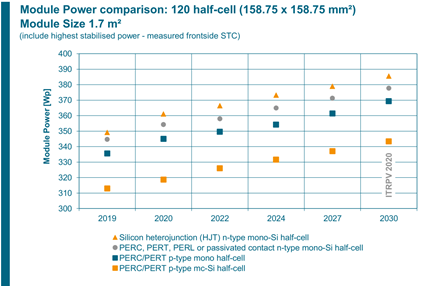

Figure 8 Module Power comparison (ITPV)
Production Capacity
To keep up with the demand, production capacity of all manufacturers is also expanding every year. Production capacity of manufacturers on the Tier 1 list doubled from 107.2 GW in 2018 to 241.09 GW in 2020. In particular, Canadian Solar is planning to double their module production capacity in 2021 compared to its 2019 volume. As a vertical integrated manufacturer, Canadian Solar is also expanding and upgrading its production on ingot, wafer and solar cells in 2021.
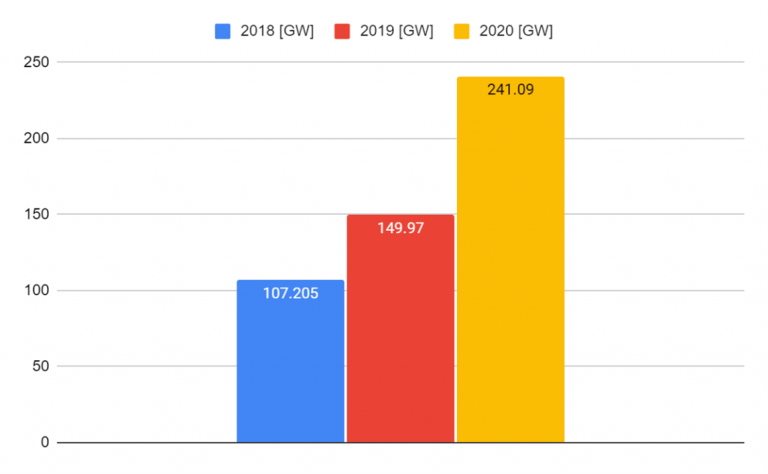
Figure 9 Total annual module manufacturing capacity [GW/year] from Tier 1 manufacturers (review.solar)
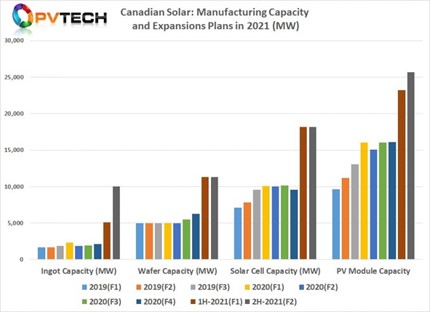
Figure 10 Canadian Solar Manufacturing Capacity and Expansion Plans in 2021 (PVtech)
Bifacial Modules
The cost of a bifacial module is decreasing together with the price of mono-facial modules. At the same time, manufacturers can practically use the same solar cell for both mono-facial and bifacial modules. This makes bifacial modules more popular for utility scale installations. However, a new designing concept arises: Because of higher currents, more powerful inverters are needed to handle greater power from the PV system. This trend also calls for a modernized mounting structure and tracking system to utilize energy potential on the site.

Figure 11 Bifacial Module Market Share prediction (ITPV)
PV with Energy Storage
Many inverter manufacturers offer hybrid inverters in their portfolio which allow residential application opportunities to be equipped with battery energy storage in a more rapid and effortless manner. Two examples of complete systems with backup functions are the Solax Hybrid system and Fronius Gen24 system. As the price of PV system components is decreasing while facing mixed supportive policy from governments, installing PV with a battery will steadily become a more popular decision in order to gain energetic independence and maximize PV system potential.

Figure 12 World Share of PV systems which are combined with storage (ITPV)

Figure 13 Europe Residential BESS Annual Installation Prediction (SolarPower Europe)
Prepare for EV era
Electric vehicles are expected to become even more popular this decade, thus replacing traditional combustion engine cars. In Europe, EVs represented 3.6% of the total number of vehicles in 2019. In Norway, more than 25% of vehicles are electric. Car manufacturers are continuously building and introducing a growing variety of models which gives prospective clients more choices and accessibility also from a financial standpoint. The growth and availability of EVs has also spurred a rising demand for accompanying accessories such as EV chargers (in-house wallbox chargers) and car park EV charging stations.
In-house wallbox chargers (because of their limitations in size and power supply) will come with AC charging concepts that offer a power output range from 3.6kW to 22kW, which allows the EV to be fully charged from 8h to 1h. Furthermore, wallboxes should normally offer integrated Wi-Fi or ethernet connection to efficiently monitor, control and optimize energy consumption of the EV. An extremely innovative solution from SolarEdge is the EV Charging Single Phase Inverter, which allows users to charge their EV directly with solar energy from their PV system.
Parking EV charging stations will take advantage of larger spaces so the device can charge the EV with DC current to minimize the losses and AC current for different car models. The result is an EV that can be fully charged faster, a system that can also work with multiple EVs being charged at the same time. The only problem that arises for this typology of EV charging stations is that there are many different types of car and plug type (check Figure 15). Choosing a specific type of plug and communication protocol between EV and charging station is still a prerogative of specific EV manufacturers, but we can still see that the market is converging in IEC 62196-3 Type 2 AC type and CSS Type 2.

Figure 14 Electric Car models in 2021 compared to 2019 (statista)

Figure 15 EV charger Plug types

Subscribe to our newsletter
so that you don’t miss any news!













